Windows 11/10 allows users to use tablet mode, which is a great feature for surfing. However, some users have reported an issue related to the feature. In this post, I will help you fix a touchscreen that stops working in tablet mode on your Windows PC. It’s a frustrating error, especially if you have tried everything you can to resolve the problem.
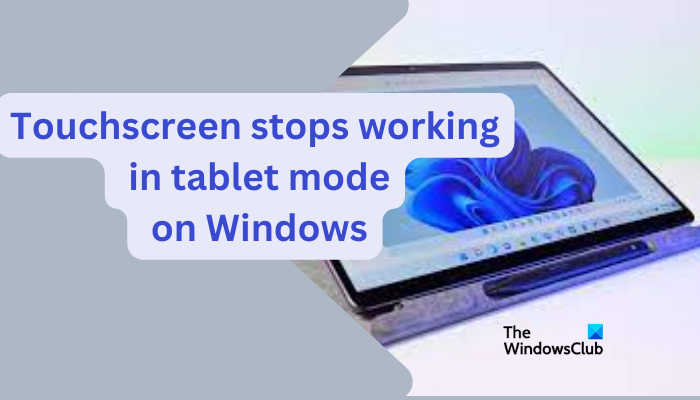
Touchscreen and tablet mode cannot be separated; they go hand in hand. So if one is not working on your PC, then it becomes hard to use the feature. You won’t be able to use your PC unless you revert to keyboard mode.
Why does touchscreen stop working in tablet mode on Windows?
The main reason why the touchscreen feature has stopped working in tablet mode on your PC is outdated or corrupted touchscreen drivers. Other reasons could be glitches that come after an update or certain apps conflicting with the feature. It would be good to note that your system may have tablet mode, but unfortunately, there is no supporting hardware, so your screen doesn’t support touch. In such a case, you will see the tablet mode, but the touchscreen will not work.
Fix Touchscreen stops working in Tablet Mode on Windows 11/10
If you cannot use the touchscreen feature in Touch Mode on your Windows PC, we recommend you try the following solutions:
- Reboot your PC
- Enable the touchscreen feature
- Run Hardware troubleshooter
- Uninstall, update, or reinstall touchscreen drivers
- Tweak Windows Registry keys
Let us explore these solutions in detail.
1] Reboot your PC

Sometimes, there could be a temporary technical issue in your system. Windows automatically fixes simple errors when you reboot your computer. So, restart your PC and try using the Tablet Mode touchscreen. We recommend starting with this preliminary solution before heading to more complex ones.
2] Enable the touchscreen feature
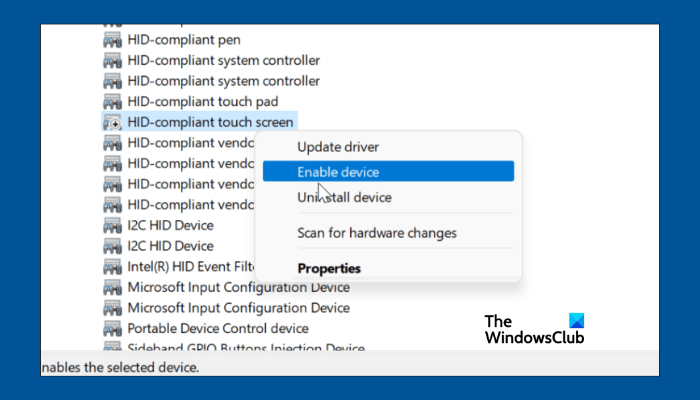
The touchscreen will not work if it’s not enabled. So try to turn it on if it’s off. It is also good to confirm if the feature is available on your PC. Follow the steps below:
- Open Device Manager by typing devmgmt.msc in the Run dialog box. Open Run by pressing the Windows button + R.
- Click Human Interface Devices and then select HID-compliant touch screen.
- After that, go to the Action tab, select Enable device, and then confirm your changes.
Sometimes, there is more than one HID device on the list. Perform these steps for each.
If the device is enabled, then leave it as it is and try the next solution.
3] Run Hardware troubleshooter
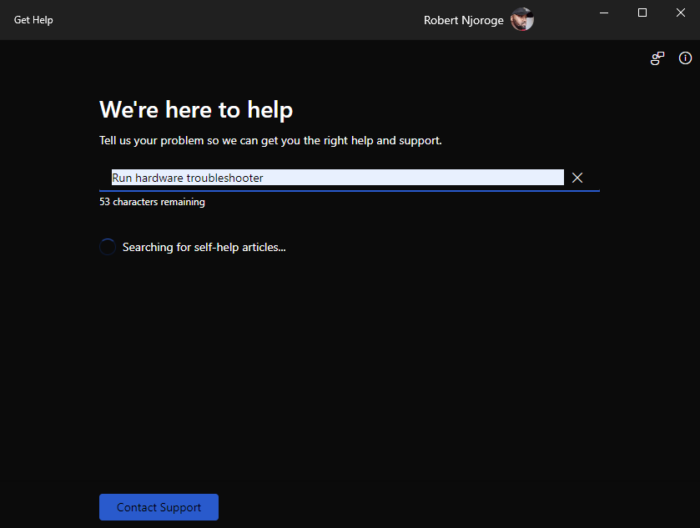
Running the Hardware troubleshooter on your PC can help you diagnose the problem and fix it automatically, or it can suggest what you need to do.
We recommend using the Get Help app to troubleshoot touchscreen issues. Open the app, search for the problem you are facing, and follow the simple on-screen steps.
Alternatively, open the Run dialog box by pressing the Windows key + R. Type the following command and click OK.
msdt.exe -id DeviceDiagnostic
This will open the Hardware and Devices windows. Locate and click Advanced, then check the box next to Apply repairs automatically and click Next.
Finally, select Appy this fix, and the tool will check for all hardware issues, including touchscreens, and fix them.
Read: HID-Compliant Touch Screen Driver is missing in Device Manager
4] Uninstall, update, or reinstall touchscreen drivers
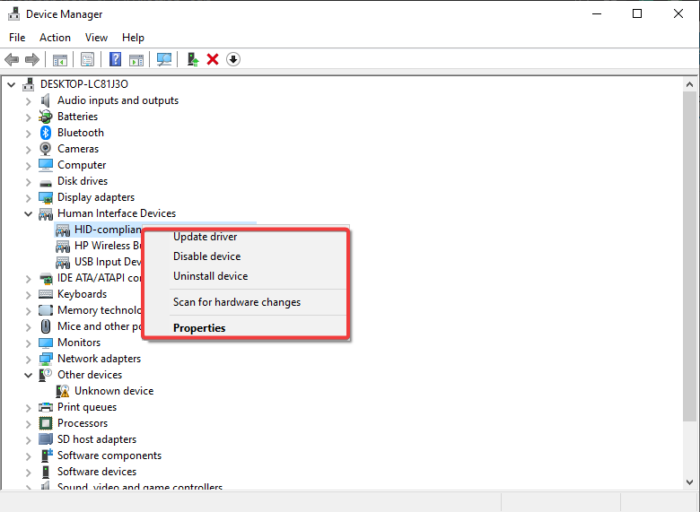
Driver issues are the main cause of the issue. If the touchscreen drivers are outdated, corrupted, or missing, you need to fix them by either uninstalling and reinstalling or updating.
We have a comprehensive guide on how to update, reinstall, or rollback drivers. Please take a look at that post for detailed steps on how to fix touchscreen drivers.
Read: How to download or update HID compliant touch screen driver
5] Tweak Windows Registry keys
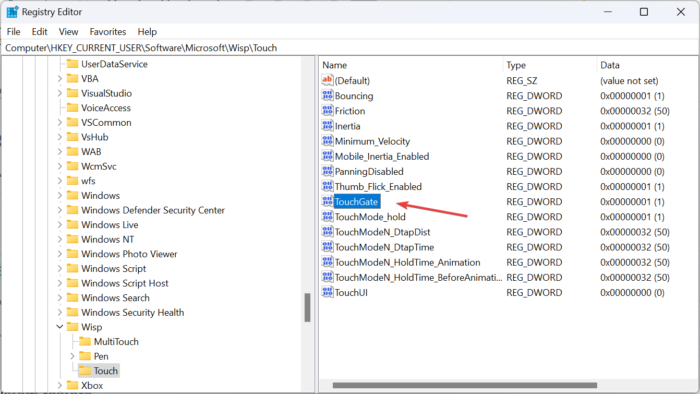
The Windows Registry hosts low-level settings for the system and programs. You can make some changes to specific keys, which can fix the touchscreen that stops working in tablet mode on Windows 11 or Windows 10.
To do so, open the Run dialog box by pressing Win + R, typing regedit, and pressing Enter on your keyboard. After that, follow the registry path below:
HKEY_CURRENT_USER\Software\Microsoft\Wisp\Touch
Go to the right side and double-click on the TouchGate option.
Change the Value data to 1 and click OK.
To effect the changes, restart your PC and see if the touchscreen is working in tablet mode.
We hope something here works for you.
Related: Touch Screen not working on Windows PC
Why does my computer have tablet mode but no touch screen?
A table mode is a software component within your Windows 11 or Windows 10 operating system. However, the touchscreen is a hardware component in specific computers. If your computer has no touchscreen feature, touch will not work, even if you have the latest version of Windows. Check if your computer supports the feature.
Related: Enable or disable Tablet PC touch input in Windows.
Leave a Reply